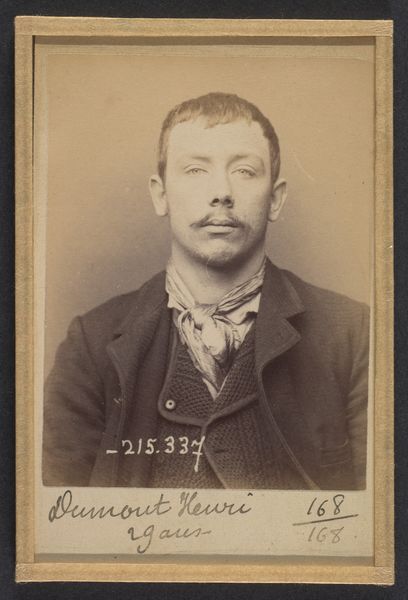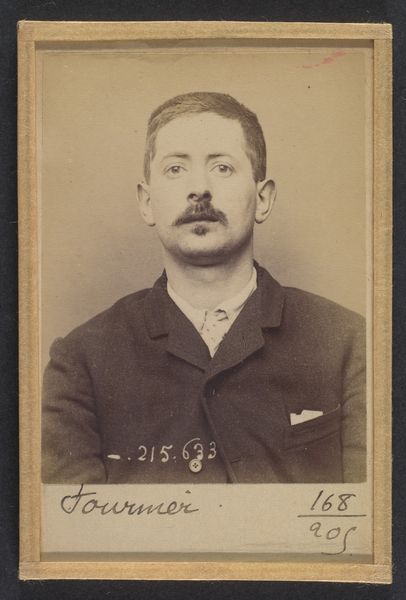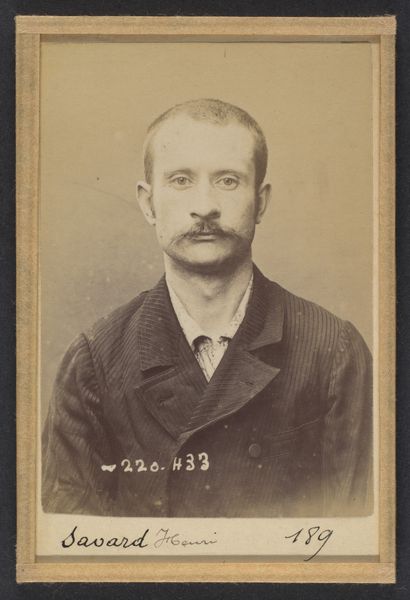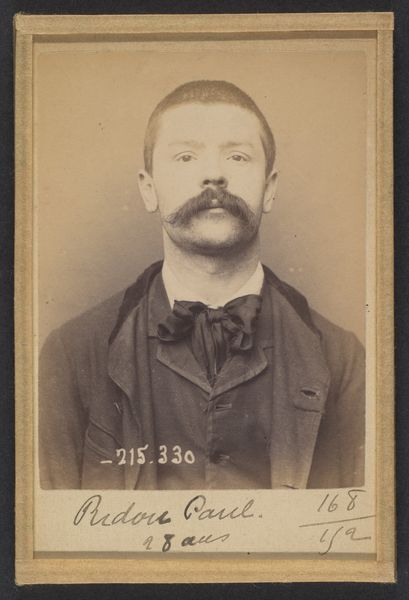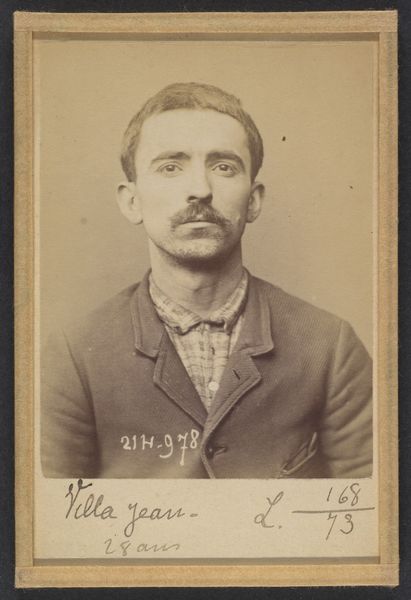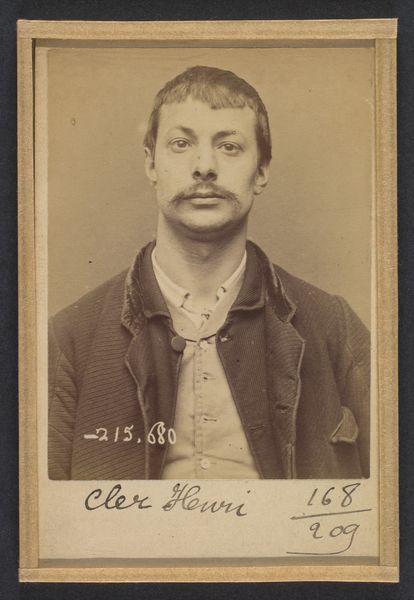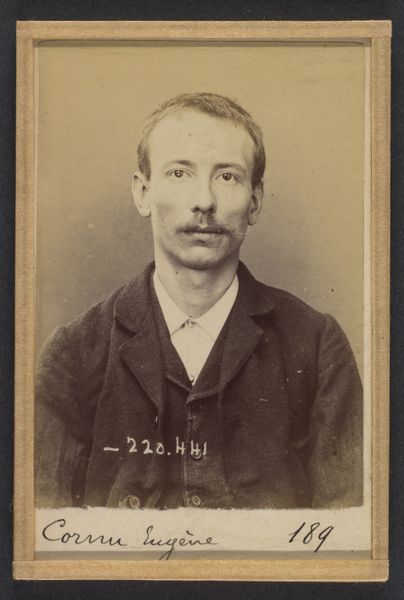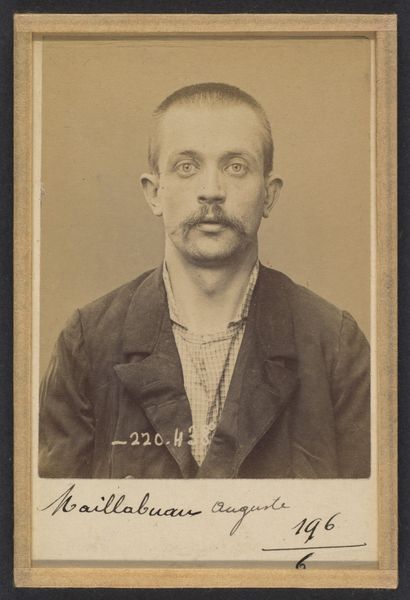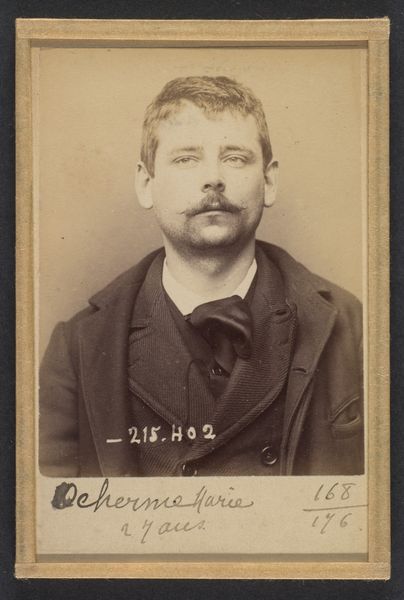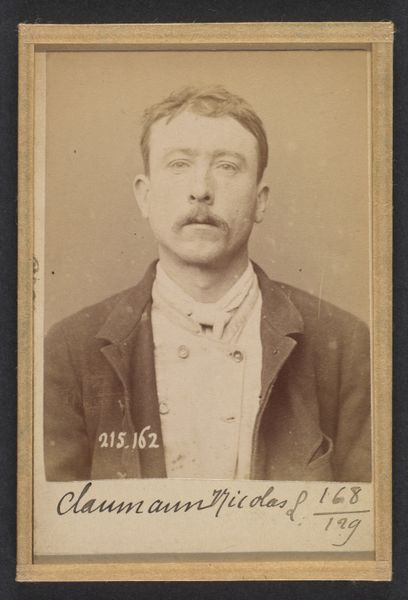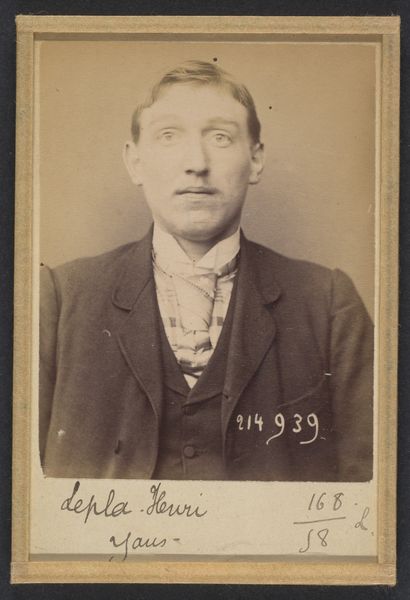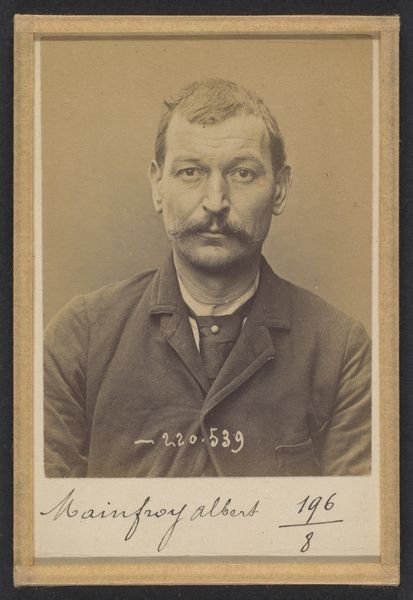
Bertho. François, Élie. 26 ans, né le 30/9/67 à Jallais (Maine & Loire). Employé. Anarchiste. 9/3/94. 1894
0:00
0:00
#
portrait
#
aged paper
#
vintage
#
photo restoration
#
historical photography
#
portrait reference
#
photo record
#
19th century
#
men
#
paper medium
#
historical font
#
columned text
Dimensions: 10.5 x 7 x 0.5 cm (4 1/8 x 2 3/4 x 3/16 in.) each
Copyright: Public Domain
Curator: The unflinching gaze from this 1894 photograph grabs you, doesn't it? It's by Alphonse Bertillon and titled "Bertho. François, Élie. 26 ans, né le 30/9/67 à Jallais (Maine & Loire). Employé. Anarchiste. 9/3/94." Quite a mouthful, but tells you almost everything, doesn't it? Editor: Immediately, I’m struck by the starkness. There's something so unsettling about the directness of the portrait. It's like looking into a soul stripped bare, but one defiant despite being vulnerable. I wonder what he thought. Curator: Precisely. Bertillon was pioneering a system of criminal identification using photography, turning the gaze of the state upon individuals like Élie. He's just a person until he's classified this way. We have here not just a picture, but an inventory item. Editor: It feels inherently dehumanizing. Knowing he was labeled an "anarchist" adds another layer. Anarchism was feared then – often conflated with terrorism by the powerful. To be identified as such was already a sort of pre-condemnation. Curator: Exactly! But look at the picture. Does he strike you as someone easily categorized? Editor: No, that's the paradox, isn’t it? His eyes hold a world of experience. You can't reduce anyone to a label. But consider that the columned handwriting seems meant for classification; a quasi-scientific objectification, a total violation. And one we’ve repeated over and over. Curator: Right. It’s easy to look back and feel superior, but these bureaucratic methods, driven by social anxieties, linger, shape present injustice too. Editor: I keep returning to his expression. He is not broken, he doesn't appear shamed; the opposite. If anything, it's like he sees right through the camera, past Bertillon, maybe even to us, all these years later. It's the face of someone who dares to resist being defined. Curator: And yet, his resistance, that fire in his eye, ironically becomes part of his definition, immortalized in this photo. We look, analyze, define all over again, now through an aesthetic lens. Tragic, almost, how these echoes play out. Editor: Ultimately, it is the interplay of historical objectification with a glimmer of irreducible individuality that resonates here; a potent reminder about the costs of categorizing people by class, race, or creed. A somber warning indeed.
Comments
No comments
Be the first to comment and join the conversation on the ultimate creative platform.
